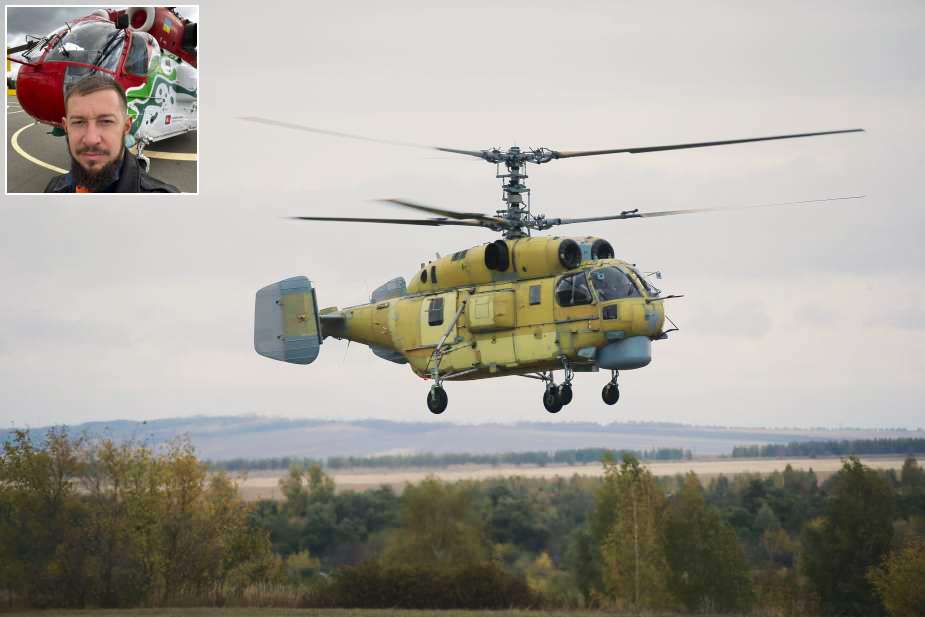Breaking news
Portugal to transfer six Kamov Ka-32 helicopters to Ukraine.
According to Kirill Fedorov on April 10, 2024, Portugal initiated the transfer of six Kamov Ka-32A11BC helicopters to Ukraine after a long period of speculation and delay. He revealed that these helicopters, acquired by Portugal in 2007 and now marked with distinctive yellow and black insignia, are in the process of being transferred to Ukraine.
Follow Army Recognition on Google News at this link

The variant used by Portugal, the Ka-32A11BC, is a modification of the Ka-32A helicopter primarily used for carrying cargo on an external sling. (Picture source: Russian social media and Telegram/Kirill Fedorov)
As reported by Fire Aviation on October 19, 2022, Portugal acquired the six Kamov Ka-32A helicopters for €348 million in 2007, intending to use them for personnel transport and firefighting. However, maintaining these helicopters became increasingly challenging, resulting in none of the helicopters being operational by April 2022. Exacerbated by the expulsion of a Russian maintenance team by the Portuguese government and the subsequent closure of the Ponte de Sor maintenance facility, in response to sanctions imposed due to Russia's actions in Ukraine, Portugal was left unable to maintain the helicopters, leaving them without airworthiness certificates, with one of the fleet inoperable due to a crash.
The decision by Portugal to transfer these helicopters to Ukraine was articulated by Helena Carreiras, Portugal's Minister of National Defence, on October 19, 2022. The transfer was in response to a request from Ukraine, which has faced significant challenges in maintaining Kamov helicopters since the start of the war due to a shortage of components. Despite the current state of the Portuguese Ka-32s, Ukraine has agreed to accept the helicopters as they are.
Introduced in 1986, the Kamov Ka-32A helicopter is a medium-sized, coaxial rotorcraft developed as a civilian adaptation of the military Ka-27PS, with its design lineage tracing back to earlier models such as the Ka-25 and Ka-27. Originally conceived for Arctic ice reconnaissance, the Ka-32 was later designed for a wider range of uses, including search and rescue missions, cargo transport, offshore support, and other utility functions. It features a sophisticated flight and navigation system, equipped with an onboard computer, radar, anti-icing systems, and equipment tailored for all-weather operations. The removal of military-specific hardware allows for increased payload capacity, adapting the helicopter for various civilian applications.
The Ka-32A, an evolution of the Ka-32T, is capable of carrying up to 13 passengers or handling a 5,000 kg payload on an external sling and is suited for a variety of roles from personnel transport to construction work, and emergency evacuations. Modifications include updated flight instruments and systems for improved measurement accuracy and protection against lightning, facilitating operations under Instrument Flight Rules (IFR) in both daylight and nighttime conditions. The helicopter received its certification in the early 1990s, following a series of design adjustments and testing, leading to the start of its serial production.
The Ka-32A measures 12.25 meters in length, and 5.4 meters in height, with a main rotor diameter of 15.9 meters. Powered by two TV3-117VMA turboshaft engines, each producing 2200 horsepower, the Ka-32A can reach a maximum speed of 260 km/h, a cruising speed of 230 km/h, and a range of 800 km. Its operational capabilities are complemented by safety features such as emergency landing equipment and crew protective gear. Additionally, the Ka-32A can be equipped with various radar and navigation systems for enhanced operational flexibility.
The Ka-32A11BC is a modification of the Ka-32A helicopter, adapted based on certification results in Canada in 1998, with the "BC" referencing British Columbia. This version introduces a two-chamber steering system, featuring a power steering unit for the control system, and incorporates an updated set of equipment and instrument color marking to align with international standards. The helicopter is available in two main configurations: one with analog cockpit instruments and another equipped with Multifunctional Flight Instruments (MFI). Up to 2011, this model was recognized for having extended service periods and enhanced durability for its main components. The Ka-32A11BC is primarily used for carrying cargo on an external sling, and is compatible with a variety of optional equipment from both Russian and foreign suppliers.























